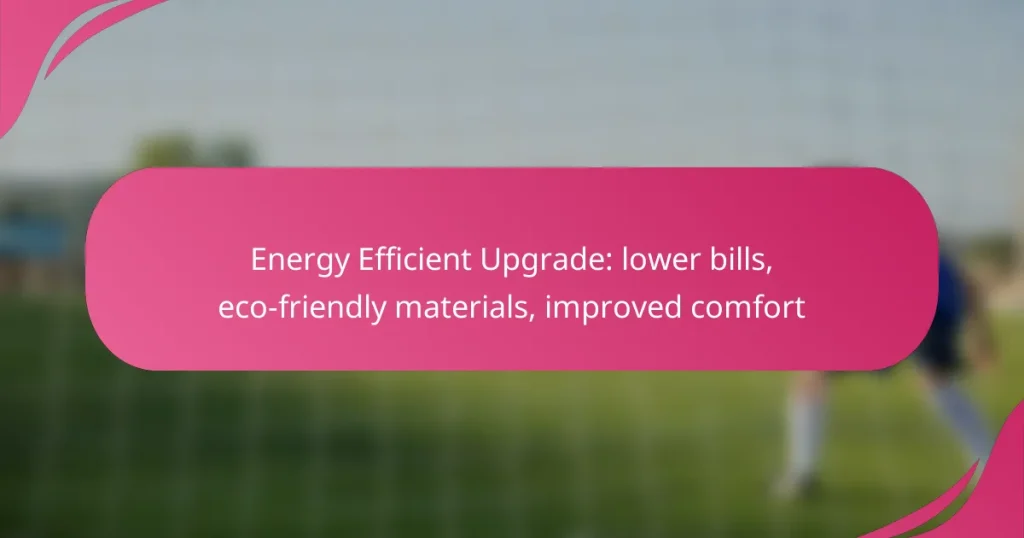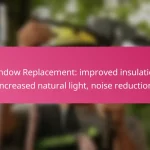Energy-efficient upgrades offer a practical solution for homeowners looking to lower their utility bills while promoting environmental sustainability. By utilizing eco-friendly materials, these enhancements not only reduce energy consumption but also improve indoor comfort and air quality. Investing in such upgrades leads to a healthier living environment and significant long-term savings.

How can energy-efficient upgrades lower bills in Canada?
Energy-efficient upgrades can significantly reduce utility bills in Canada by minimizing energy consumption and optimizing resource use. By implementing these upgrades, homeowners can enjoy lower costs while contributing to environmental sustainability.
Reduced energy consumption
Energy-efficient upgrades, such as improved insulation, energy-efficient windows, and high-efficiency heating systems, directly lower energy consumption. For instance, upgrading to ENERGY STAR-rated appliances can reduce electricity usage by around 10-50% compared to standard models.
Additionally, implementing smart home technologies, like programmable thermostats, allows for better control over heating and cooling, further decreasing energy waste. Homeowners should assess their current energy use to identify the most impactful upgrades.
Incentives and rebates
In Canada, various government programs offer incentives and rebates for energy-efficient upgrades, making them more financially accessible. Programs like the Canada Greener Homes Grant provide funding for improvements such as insulation, windows, and heating systems.
Homeowners should research local initiatives and federal programs to maximize savings. Many provinces also have their own rebate programs, which can significantly reduce the upfront costs of energy-efficient renovations.
Long-term savings
Investing in energy-efficient upgrades leads to substantial long-term savings on utility bills. While initial costs may be higher, the return on investment often pays off within a few years through reduced energy expenses.
For example, homeowners can expect to save hundreds of dollars annually on heating and cooling costs after upgrading insulation and windows. Additionally, energy-efficient homes may have higher resale values, making them a wise investment for the future.

What eco-friendly materials can be used for upgrades?
Eco-friendly materials for upgrades include options that reduce energy consumption, enhance comfort, and minimize environmental impact. These materials not only help lower utility bills but also contribute to a healthier living environment.
Recycled insulation
Recycled insulation is made from materials like denim, cellulose, or fiberglass, which are repurposed to provide thermal resistance. This type of insulation can significantly reduce energy costs by maintaining consistent indoor temperatures.
When considering recycled insulation, check for certifications such as GREENGUARD or Energy Star to ensure quality and safety. Installation can often be done as a DIY project, but hiring a professional may yield better results for complex spaces.
Low-VOC paints
Low-VOC (volatile organic compounds) paints are formulated to emit fewer harmful chemicals into the air, making them a healthier choice for indoor environments. These paints offer a wide range of colors and finishes while reducing air pollution and improving indoor air quality.
When selecting low-VOC paints, look for labels indicating compliance with environmental standards. Expect to pay slightly more than traditional paints, but the long-term health benefits and reduced odors make them a worthwhile investment.
Energy-efficient windows
Energy-efficient windows are designed to minimize heat transfer, helping to keep homes warmer in winter and cooler in summer. Features such as double or triple glazing, low-emissivity (low-E) coatings, and gas fills enhance their performance.
Investing in energy-efficient windows can lead to significant savings on heating and cooling bills. Look for windows that meet ENERGY STAR standards for your region, as they are tested for performance in local climates, ensuring optimal efficiency.
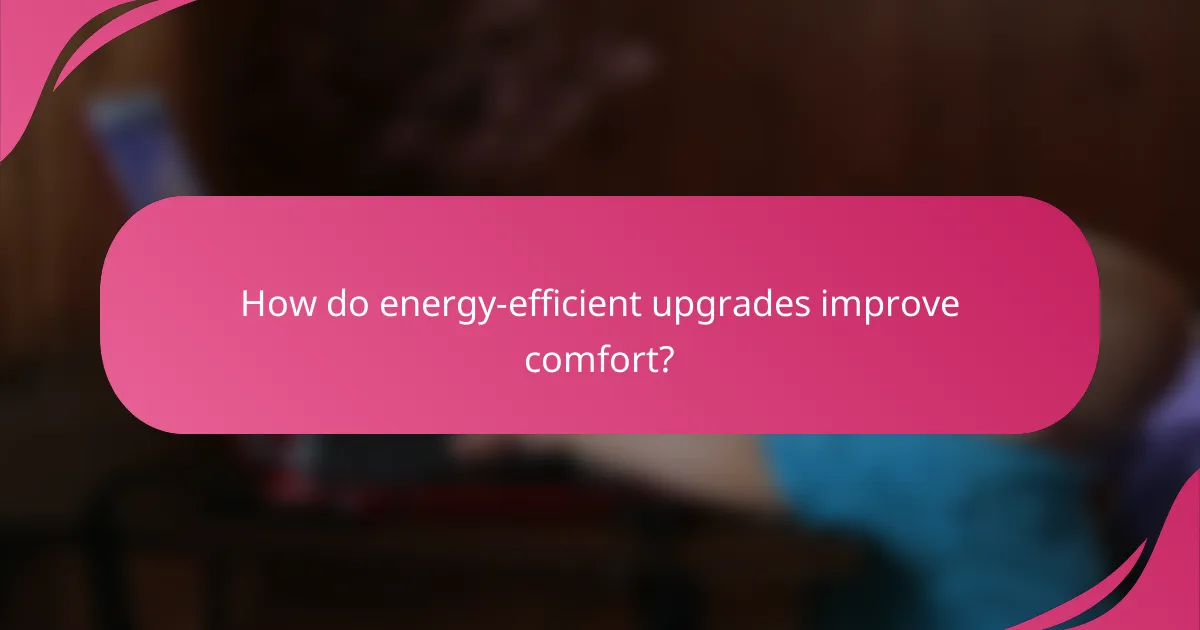
How do energy-efficient upgrades improve comfort?
Energy-efficient upgrades enhance comfort by creating a more stable indoor environment, reducing temperature fluctuations, and improving air quality. These upgrades not only lower energy bills but also contribute to a healthier living space.
Better temperature regulation
Energy-efficient upgrades, such as improved insulation and high-performance windows, help maintain consistent indoor temperatures. By minimizing heat loss in winter and heat gain in summer, these features create a more comfortable living environment year-round.
Consider using double or triple-pane windows and adding insulation to walls and attics. These upgrades can reduce the need for heating and cooling systems to work as hard, leading to lower energy consumption and costs.
Enhanced indoor air quality
Upgrading to energy-efficient systems often includes better ventilation, which significantly improves indoor air quality. Proper ventilation helps to reduce humidity levels and eliminate pollutants, creating a healthier atmosphere.
Installing energy recovery ventilators (ERVs) can ensure a continuous flow of fresh air while minimizing energy loss. Regular maintenance of HVAC systems also plays a crucial role in maintaining air quality by preventing dust and allergens from circulating indoors.
Noise reduction
Energy-efficient upgrades can significantly reduce noise pollution from outside. Features like insulated walls and soundproof windows help to block external sounds, creating a quieter and more peaceful indoor environment.
When selecting windows, look for those with soundproofing capabilities, which can be particularly beneficial in urban areas. Additionally, using thicker insulation materials can further dampen noise transmission, enhancing overall comfort in your home.
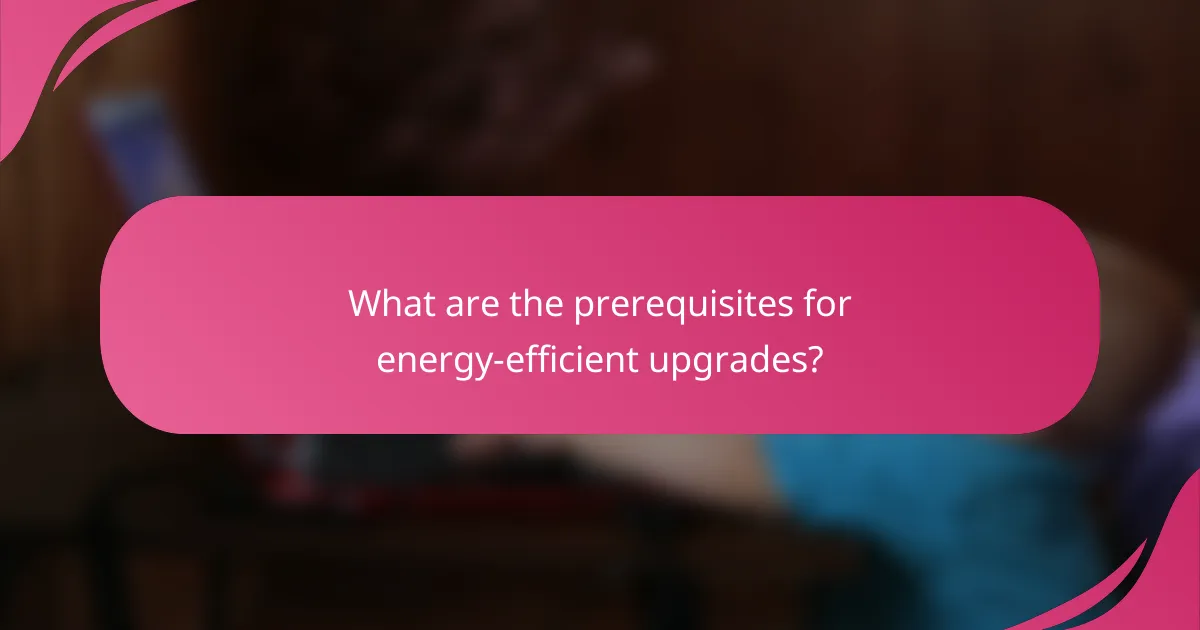
What are the prerequisites for energy-efficient upgrades?
Before undertaking energy-efficient upgrades, homeowners should conduct a thorough assessment of their current energy use, budget, and local regulations. Understanding these prerequisites ensures that upgrades are effective, financially feasible, and compliant with local building codes.
Home energy audit
A home energy audit is a critical first step in identifying areas where energy efficiency can be improved. This process typically involves a professional assessment of insulation, heating and cooling systems, and overall energy consumption patterns.
During the audit, various tools such as blower doors and thermal imaging cameras may be used to pinpoint air leaks and insulation deficiencies. Homeowners can expect to receive a detailed report outlining specific recommendations for upgrades that can lead to lower energy bills.
Budget assessment
Assessing your budget is essential for planning energy-efficient upgrades. Homeowners should determine how much they can invest in improvements, considering both immediate costs and long-term savings on energy bills.
It’s advisable to create a prioritized list of upgrades based on potential energy savings and available funds. For example, upgrading insulation might have a higher return on investment compared to replacing windows, depending on the home’s current condition.
Local building codes
Familiarizing yourself with local building codes is crucial before starting any energy-efficient upgrades. These regulations can dictate what materials and methods are permissible, ensuring that renovations meet safety and efficiency standards.
Homeowners should consult their local building authority or a professional contractor to understand specific requirements. Compliance with these codes not only avoids potential fines but also ensures that upgrades are safe and effective.
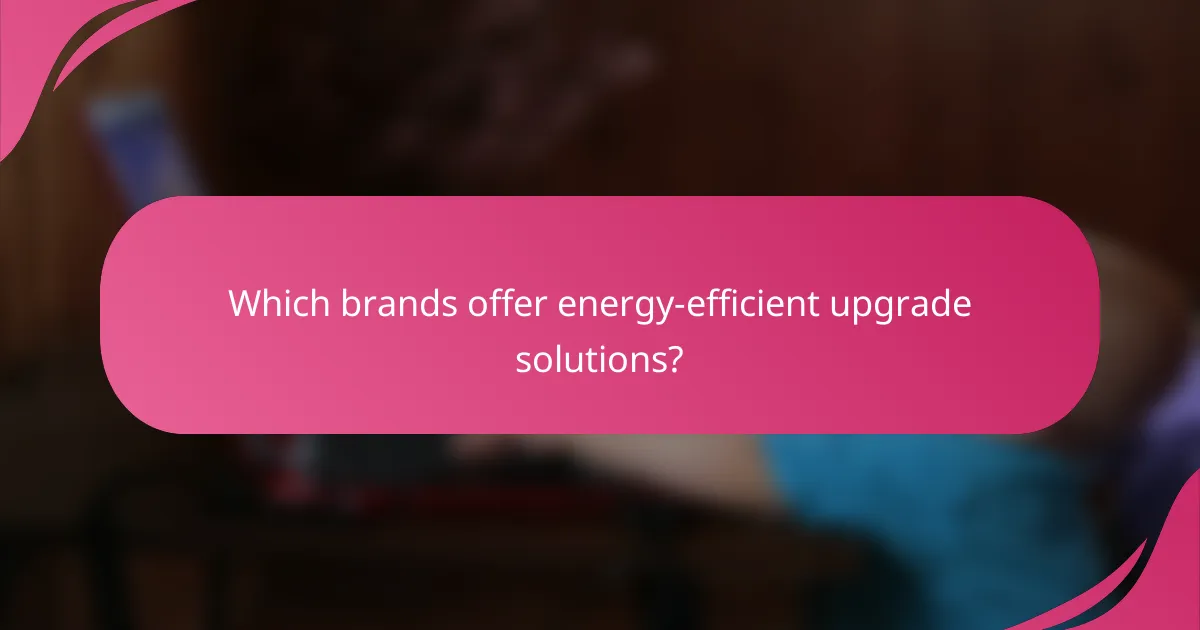
Which brands offer energy-efficient upgrade solutions?
Several brands provide effective energy-efficient upgrade solutions that can help lower utility bills, enhance comfort, and utilize eco-friendly materials. Notable companies include Nest, Anderson, and Owens Corning, each specializing in specific areas of home efficiency improvements.
Nest (smart thermostats)
Nest offers smart thermostats that learn your schedule and adjust heating and cooling accordingly, which can lead to significant energy savings. By optimizing your home’s temperature settings, these devices can reduce energy consumption by up to 15% compared to traditional thermostats.
When considering a Nest thermostat, look for features such as remote control via smartphone apps, energy usage reports, and compatibility with various HVAC systems. Installing a smart thermostat can be a straightforward DIY project, but professional installation is recommended for complex systems.
Anderson (windows)
Anderson specializes in energy-efficient windows designed to minimize heat transfer and reduce energy costs. Their products often feature double or triple glazing, low-emissivity (Low-E) coatings, and argon gas fills, which enhance insulation and comfort.
When selecting Anderson windows, consider factors like the climate in your area and the specific energy ratings of the windows, such as the U-factor and Solar Heat Gain Coefficient (SHGC). Proper installation is crucial to maximize their efficiency, so hiring a certified installer is advisable.
Owens Corning (insulation)
Owens Corning provides a range of insulation products that improve energy efficiency by reducing heat loss in winter and keeping homes cool in summer. Their fiberglass insulation is popular for its effectiveness and fire resistance, making it a safe choice for homeowners.
When upgrading insulation, assess the R-value needed for your region, as this determines the insulation’s effectiveness. Owens Corning products can be installed in attics, walls, and basements, and proper sealing of gaps is essential to prevent air leaks and maximize energy savings.

What are the latest trends in energy-efficient upgrades?
Recent trends in energy-efficient upgrades focus on smart technology, renewable energy sources, and eco-friendly materials. These upgrades not only lower utility bills but also enhance comfort and sustainability in homes.
Smart home integration
Smart home integration involves using technology to control energy consumption efficiently. Devices such as smart thermostats, lighting systems, and energy monitors allow homeowners to optimize usage based on real-time data and preferences.
For instance, a smart thermostat can adjust heating and cooling automatically, potentially reducing energy costs by 10-20%. Homeowners should consider compatibility with existing systems and the ease of use when selecting smart devices.
Renewable energy sources
Incorporating renewable energy sources, such as solar panels and wind turbines, is a significant trend in energy-efficient upgrades. These systems can drastically reduce reliance on non-renewable energy and lower electricity bills over time.
For example, solar panel installations can lead to savings of hundreds to thousands of dollars annually, depending on local sunlight conditions and energy prices. Homeowners should evaluate local incentives, such as tax credits or rebates, which can offset initial installation costs.
